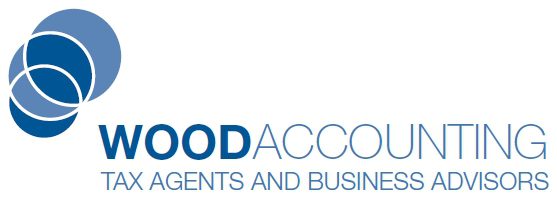Investing in property can be a lucrative way to build wealth, but it’s essential to understand the tax implications to maximize your returns. This guide will cover the full life cycle of property investment taxation for new investors, including:
- initial expenses,
- operating income and expenses,
- depreciation,
- negative gearing,
- joint ownership – tenants in common vs joint tenants,
- and capital gains tax.

Initial Expenses and Cost Base
When you purchase an investment property, several initial expenses form part of the cost base, which is crucial for calculating capital gains tax (CGT) when you sell the property. These expenses include:
- Purchase Price: The amount paid for the property.
- Stamp Duty: This is a significant expense and varies by state.
- Legal Fees: Costs for conveyancing and legal advice during the purchase.
- Pest and Building Inspections: These are essential to ensure the property is in good condition.
- Title Transfer Fees: Charges for transferring the property title to your name.
Other expenses such as loan establishment fees and mortgage insurance can also be included in the cost base. Keeping detailed records of these expenses is crucial for future tax calculations.
Operating Income and Expenses
Once you own the property, you’ll need to report the annual income and expenses in your tax returns.
These expenses need to be apportioned between joint owners and also apportioned based on the days per year available for rent.
Operating Income:
- Rental Income: The primary source of income from your investment property. Ensure all rental payments are documented.
Operating Expenses:
- Property Management Fees: Costs for hiring a property manager.
- Maintenance and Repairs: Expenses for keeping the property in good condition. Note that improvements may need to be capitalised and depreciated over a few years.
- Interest on Loan: The interest portion of your mortgage payments.
- Council Rates and Water Charges: Ongoing costs for local government services.
- Insurance: Premiums for building, landlord, and contents insurance.
- Depreciation: Both capital works deductions (building write-off) and plant and equipment depreciation.
Claiming these expenses can significantly reduce your taxable rental income, so keeping thorough records is essential.
Depreciation
Depreciation allows property investors to claim a deduction for the wear and tear of the property’s structure and its fixtures and fittings over time.
Capital Works Depreciation:
- Applies to the building structure and permanent fixtures.
- Generally, you can claim 2.5% per year over 40 years for residential properties built after 1987.
Plant and Equipment Depreciation:
- Applies to removable items like appliances, carpets, and hot water systems.
- The rate and method of depreciation depend on the item’s effective life.
- Residential properties purchased after 9th May 2017 that are not NEW are not allowed to claim depreciation on the transferred fixtures and fittings.
- New build owners can still claim depreciation on fixtures and fittings.
A depreciation schedule, from a qualified quantity surveyor, is the only way to maximize your claims. For our recommended provider, click here.
Negative Gearing
Negative gearing is a popular strategy among property investors in Australia. It occurs when the cost of owning a rental property (including mortgage interest, maintenance, and other expenses) exceeds the income it generates from rent. Here’s a quick explainer on how it works and its potential benefits:
How Negative Gearing Works
- Income: This is the rental income you receive from your investment property.
- Expenses: These include mortgage interest, property management fees, maintenance, insurance, and other costs associated with owning the property.
- Negative Gearing: When your annual expenses are higher than your rental income, you are negatively geared.
For example, if your rental income is $20,000 per year but your expenses total $25,000, you have a $5,000 loss.

Tax Benefits
The primary advantage of negative gearing is the ability to offset your property loss against other income, such as your salary. This can reduce your overall taxable income, resulting in tax savings.
For instance, if your salary is $100,000 and you have a $5,000 loss from your rental property, your taxable income would be reduced to $95,000. This can place you in a lower tax bracket or reduce the amount of tax you owe.
Eg the $5,000 loss for someone in the 32% tax bracket would save them $1,600 in tax.
Depreciation is a non-cash deduction. This means you get a deduction for a set amount but you do not pay that figure from your cash flow.
So if depreciation was a further $4,000 deduction this person would have a $9,000 loss. Tax saved now at 32% is $2,880.

For a concise overview, you can also check out our 1-page Rental Property Tax Summary.
Potential Risks of Negative Gearing
While negative gearing offers tax benefits, it’s important to consider the potential risks:
- Cash Flow: Since your property is generating a loss, you need to ensure you have sufficient cash flow to cover the shortfall. You may need to put cash in each month and then get a tax refund at the end of the year.
- Market Conditions: Relying on property value appreciation to make up for rental losses can be risky if the market doesn’t perform as expected.
- Interest Rates: Increases in interest rates can lead to higher mortgage repayments, further impacting your cash flow.
Long-Term Gains (Capital Gains Tax)

Many investors use negative gearing as a long-term strategy, banking on capital growth to eventually sell the property at a profit. In Australia Capital Gains are discounted by 50% before being taxed, as long as the property has been owned for longer than 12 months. This makes Capital Gains Tax an attractive tax to pay as it is half the tax you pay on other income like wages. The tax benefits help manage short-term losses while waiting for the property value to increase.
Joint Ownership: Tenants in Common vs. Joint Tenants
Property can be owned jointly in two ways: as tenants in common or joint tenants, and each has different tax implications.
Tenants in Common:
- Each owner holds a specific share of the property.
- Owners can hold unequal shares, e.g., one owner may have a 70% interest, and another may have 30%.
- Each owner is responsible for their share of income and expenses, and they report this proportion in their tax returns.
- Upon sale, each owner pays CGT on their respective share of the profit.
Joint Tenants:
- Each owner has an equal share of the property.
- Income and expenses are split 50/50.
- In the event of one owner’s death, their share automatically passes to the surviving owner(s) without forming part of the deceased’s estate.
Understanding the differences can help you plan your investment and tax strategy more effectively.
Conclusion
Property investment can offer substantial financial benefits, but understanding the tax implications is crucial for success. By knowing what expenses form part of your cost base, how to manage operating income and expenses, the differences in joint ownership, and how to leverage depreciation, you can make informed decisions and optimize your investment returns. Getting advice around capital gains tax is best done before you sell the property to fully understand your situation. Always consult with a tax professional to ensure compliance and to tailor strategies to your specific circumstances.

